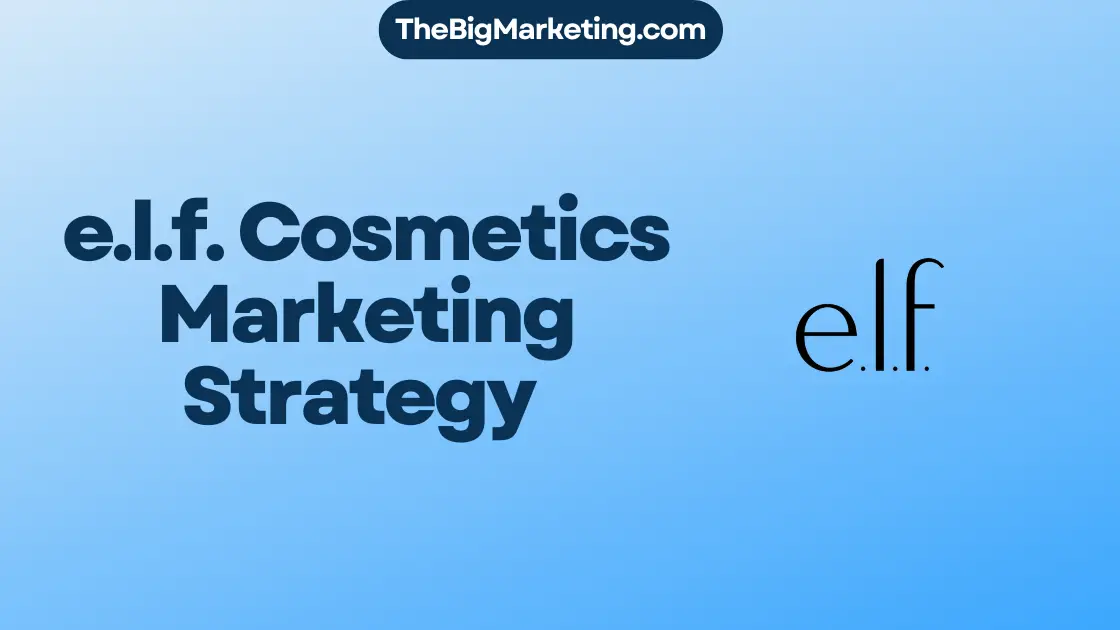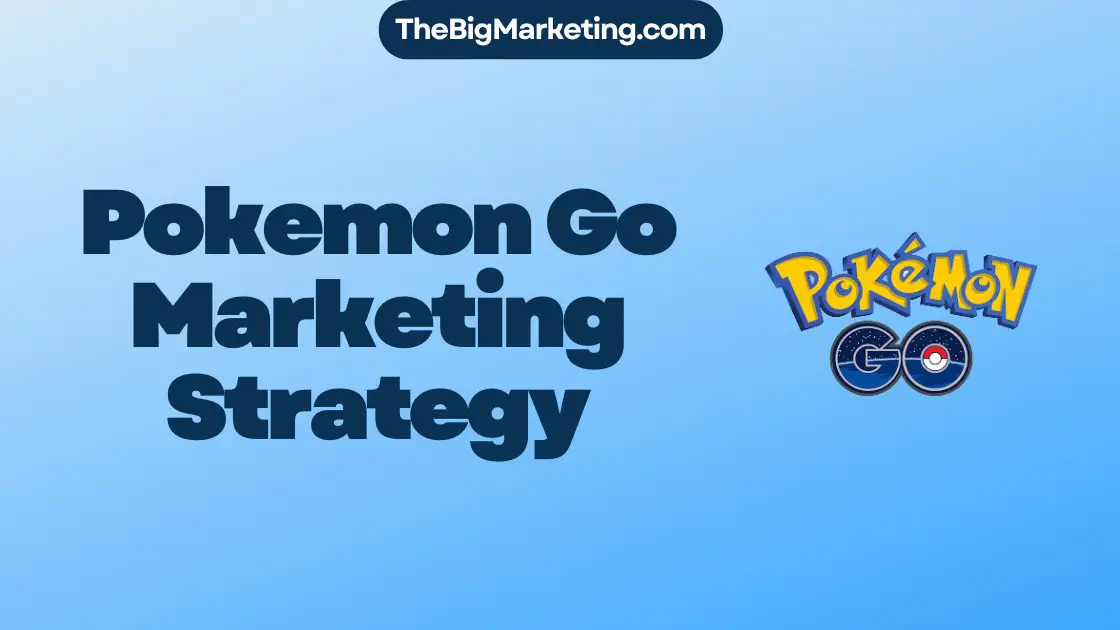Google, the search engine giant, has revolutionized online marketing with its innovative marketing strategies. This case study explores Alphabet Inc’s marketing strategy in 2024 and examines its approach to brand positioning, market segmentation, and digital marketing.
Key Takeaways
- Alphabet Inc, the parent company of Google, has implemented groundbreaking marketing strategies.
- The company focuses on brand positioning, market segmentation, and digital marketing.
- Google’s search engine dominance and pay-per-click advertising contribute to its marketing success.
- Product diversification, including acquisitions like YouTube, has expanded Alphabet Inc’s portfolio.
- Brand consistency and a user-centric approach are core aspects of Alphabet Inc’s marketing strategy.
Search Engine Dominance
Google’s marketing strategy began with its search engine dominance. The company focused on delivering fast and accurate search results to provide users with the best possible experience. As Google gained popularity, it recognized the potential of monetizing its platform through advertising.
To increase brand visibility and revenue, Google launched Google Ads (formerly known as AdWords), revolutionizing online advertising with its pay-per-click advertising model. This tactic allowed advertisers to only pay when users clicked on their ads, making it a cost-effective strategy for businesses of all sizes.
Google Ads quickly became a powerful tool that gave businesses the opportunity to reach their target audience and drive relevant traffic to their websites. Advertisers could create customized ads that appeared alongside relevant search results, ensuring maximum exposure to potential customers.
With its comprehensive reach and extensive network of websites and partners, Google Ads enabled advertisers to effectively target their audience based on demographics, interests, and keywords. This level of targeting ensured that ads were displayed to users who were most likely to be interested in the products or services being advertised, increasing the chances of engagement and conversions.
Pay-Per-Click Advertising
Pay-per-click advertising became a major source of revenue for Google, allowing the company to continue offering free access to its search engine and other services. Businesses around the world recognized the value of pay-per-click advertising on Google, as it provided a measurable return on investment (ROI) and the ability to track campaign performance.
The success of Google’s pay-per-click advertising model led to the growth of Google Ads as a comprehensive platform for managing and optimizing campaigns. Advertisers could set specific budgets, create ad variations, and analyze performance data to make data-driven decisions, ensuring the highest possible ROI.
This approach to marketing allowed businesses to allocate their advertising budgets more effectively, minimizing wasteful spending on ads that didn’t generate results. With Google Ads, advertisers had full control over their campaigns, enabling them to continuously refine their strategies and maximize the impact of their advertising investment.
The image above showcases the Google Ads interface, highlighting the various features and tools available to advertisers for creating, managing, and optimizing their pay-per-click campaigns.
Google’s marketing tactics, including the introduction of Google Ads and the pay-per-click advertising model, played a critical role in the company’s success. By leveraging its search engine dominance, Google revolutionized online advertising and provided businesses with an effective platform to reach their target audience. The next section will explore Google’s product diversification and how it further expanded its market presence.
Product Diversification
Google, known for its search engine dominance, expanded its product and service offerings to cater to a diverse range of user needs. This strategic move allowed the company to strengthen its presence in users’ lives and further solidify its position as a technology leader. Let’s explore some of the noteworthy products and acquisitions that showcase Google’s commitment to innovation and user-centric solutions.
YouTube: Revolutionizing Online Video
One of Google’s significant acquisitions was YouTube in 2006. This move opened up new opportunities for the company to dominate the online video landscape. YouTube, a popular video-sharing platform, has become an integral part of people’s lives and has transformed the way we consume video content. With millions of users and diverse content creators, YouTube has immensely contributed to Google’s growth and influence in the digital space.
Google Drive: Empowering Collaboration
In addition to expanding its reach in video, Google introduced Google Drive, a cloud storage and file synchronization service. With Google Drive, users can store and access their files from anywhere, making collaboration easier and more efficient. Its seamless integration with other Google products like Google Docs, Sheets, and Slides enables users to create, edit, and share documents in real-time, fostering teamwork and productivity.
Gmail: Simplifying Email Communication
Gmail, a free email service offered by Google, revolutionized the way we communicate electronically. With its user-friendly interface and robust features, Gmail quickly gained popularity and became one of the most widely used email platforms globally. Its innovative features, such as conversation threading, powerful search capabilities, and spam filters, have simplified email management, making Gmail a preferred choice for users across the globe.
Android OS: Fueling Mobile Innovation
Recognizing the growing importance of mobile devices, Google developed the Android operating system (OS). Android OS is an open-source platform that powers millions of smartphones and tablets worldwide. By providing a flexible and customizable mobile operating system, Google empowered device manufacturers to create innovative products and offered users a rich ecosystem of apps and services.
Through strategic acquisitions like YouTube and the introduction of products like Google Drive, Gmail, and Android OS, Google successfully diversified its portfolio and established a strong presence across various user experiences. This product diversification has allowed Google to cater to different audiences and further solidify its position as a technology giant.
Brand Consistency
Google, known for its minimalist design and colorful logo, has successfully maintained brand consistency throughout its existence. The clean and uncluttered interface of Google’s search engine exemplifies the concept of Google minimalist design. This design philosophy prioritizes simplicity and allows users to focus on the core task at hand: finding information quickly and effectively.
The Google logo, with its vibrant colors, has become an iconic symbol that instantly evokes recognition and association with the brand. The combination of primary colors – blue, red, yellow, and green – creates a visually appealing and memorable identity, further enhancing brand recognition.
However, brand consistency goes beyond design elements. Google has also made a name for itself through its ethical practices. The company’s unofficial motto, “Don’t be evil,” has been widely recognized and celebrated. It reflects Google’s commitment to responsible conduct and upholding societal values.
By adhering to a consistent design aesthetic, utilizing a colorful logo, and prioritizing ethical practices, Google has distinguished itself in the market and built a strong brand identity. This consistency creates a sense of trust and reliability among users, making Google a globally recognized and respected brand.
Google Minimalist Design Example:
| Benefits of Brand Consistency | Examples |
|---|---|
| Increased brand recognition | Recognition of the Google logo across various platforms and applications |
| Enhanced brand trust | Users associate Google’s minimalist design with a user-friendly and trustworthy experience |
| Improved brand loyalty | Consistent ethical practices create a positive perception of the brand among consumers |
| Clear and memorable brand identity | Google’s colorful logo serves as a visual representation of the brand |
User-Centric Approach
At the core of Google’s marketing strategy is a strong emphasis on understanding and anticipating user needs. The company consistently strives to innovate and improve its products and services to enhance the user experience. This user-centric approach has resulted in the development of several key features and tools that have become integral parts of our everyday lives.
Google Maps
One of the most notable innovations that stemmed from Google’s user-centric approach is Google Maps. This powerful mapping service has revolutionized navigation and location-based services, making it easier than ever for users to find their way, discover new places, and plan their journeys efficiently. With features such as real-time traffic updates, public transportation information, and street view imagery, Google Maps has become an indispensable tool for millions of people worldwide.
Google Assistant
Another product that exemplifies Google’s commitment to user-centric innovation is Google Assistant. This intelligent virtual assistant uses advanced natural language processing and machine learning algorithms to provide users with personalized assistance and information. Whether it’s answering questions, setting reminders, controlling smart home devices, or even engaging in natural conversations, Google Assistant has become a reliable and helpful companion for users in their day-to-day activities.
Google Photos
Google Photos is yet another testament to Google’s dedication to improving the user experience. This cloud-based photo and video storage service offers unlimited free storage, intelligent organization, and powerful search capabilities. With features like automatic categorization based on people, places, and objects and the ability to create movies, collages, and animations, Google Photos has transformed the way users store, organize, and relive their precious memories.
By putting the needs of its users first, Google continues to innovate and create products and services that enhance our daily lives. The user-centric approach has not only earned Google a loyal user base but has also solidified its position as a leader in the technology industry.
| Innovative Features | Advantages |
|---|---|
| Real-time traffic updates | Accurate and up-to-date information for efficient navigation |
| Public transportation information | Easier planning of routes and schedules |
| Street view imagery | Visual context for better understanding of locations |
Data-Driven Advertising
Google leverages user data to offer highly targeted advertising, benefiting both advertisers and users. By analyzing the vast amount of Google user data, the company is able to deliver ads that are relevant and personalized to individual users’ preferences and interests. This data-driven advertising approach ensures that users are provided with ads that are more likely to resonate with them, ultimately enhancing their overall browsing experience. Advertisers, on the other hand, benefit from the increased effectiveness of their marketing campaigns, as their ads are reaching a more receptive and engaged audience.
Targeted Advertising for Enhanced Engagement
The use of Google user data enables advertisers to implement targeted advertising strategies. Through Google Ads, advertisers can reach their specific target audience based on factors such as demographics, interests, and online behavior. This level of granularity allows advertisers to tailor their messages and offers to effectively engage with potential customers. The result is a more efficient use of marketing resources and increased return on investment (ROI).
Google Analytics: A Key Tool for Data-Driven Decisions
To further optimize their advertising campaigns, marketers can utilize Google Analytics. This powerful platform provides actionable insights into user behavior, content performance, and campaign effectiveness. With Google Analytics, marketers can gain access to valuable data points and metrics that inform their decision-making process. By analyzing this data, marketers can identify trends, uncover customer preferences, and fine-tune their strategies to achieve better results.
| Benefits of Data-Driven Advertising | Benefits for Advertisers | Benefits for Users |
|---|---|---|
| Enhanced targeting and reach | Increased marketing effectiveness | Relevant and personalized ads |
| Improved ROI | Efficient use of marketing resources | Enhanced browsing experience |
| Data-driven decision-making | Optimized advertising campaigns | Less intrusive advertising |
The Hypothetical Scenario
Imagine a world without Google, where one of the internet’s largest and most influential companies does not exist. This hypothetical scenario unveils the potential repercussions across different aspects of the digital landscape and the global economy.
Information Retrieval: Relying on Traditional Sources
In the absence of Google, information retrieval would undergo a significant transformation. Users would be compelled to turn to traditional sources such as libraries, books, and printed materials for knowledge and research. The ease and convenience of quickly accessing vast amounts of information through a simple search query would be lost, necessitating a return to more time-consuming methods of information gathering.
Reshaping Online Advertising
Online marketing would experience a seismic shift without Google Ads, the pioneering platform that revolutionized the way businesses promote their products and services. Advertisers would need to adopt alternative advertising channels, modifying their strategies to maximize reach and engagement. The absence of Google Ads might spur innovative approaches to online advertising, as marketers explore new platforms and methodologies.
Impact on Technological Innovation
Google’s absence would reverberate within the realm of technological innovation. The company has consistently pushed the boundaries of possibility, investing heavily in research and development to create groundbreaking products and technologies. Without Google’s immense resources and research-driven mindset, the pace of innovation in various fields would likely decrease, impacting advancements in artificial intelligence, machine learning, and other emerging technologies.
Economic Implications
The global economy would bear the weight of Google’s absence. The company’s significant contributions to job creation, economic growth, and entrepreneurial opportunities would diminish. The absence of Google’s advertising revenue and technological advancements could cause a ripple effect on businesses and industries that rely heavily on the digital ecosystem. The economic impact would require adaptation and recalibration, as businesses and governments explore alternative avenues to sustain growth and prosperity.
Industry Analysis
An analysis of Google Alphabet’s industry reveals its attractiveness and the factors that contribute to its competitive advantage. By assessing the industry using Porter’s Five Forces model and a TOWS matrix analysis, we can gain valuable insights into Google Alphabet’s competitiveness in the market.
Porter’s Five Forces Analysis
Porter’s Five Forces model allows us to understand the competitive forces within an industry and assess the potential profitability of a company. Let’s analyze Google Alphabet’s industry using this framework:
- Threat of New Entrants: Google Alphabet’s dominance and vast resources act as barriers to entry, making it difficult for new players to enter the market.
- Bargaining Power of Suppliers: As a technology company, Google Alphabet has the power to negotiate favorable terms with its suppliers, reducing their bargaining power.
- Bargaining Power of Buyers: Due to Google Alphabet’s strong brand reputation and comprehensive product offerings, buyers have limited power to negotiate advantageous terms.
- Threat of Substitutes: While there are alternative search engines and digital services available, Google Alphabet’s superior technology and market presence make it the top choice for most users.
- Intensity of Competitive Rivalry: Google Alphabet faces competition from other tech giants, but its market dominance, extensive resources, and continuous innovation give it a significant competitive edge.
Overall, Porter’s Five Forces analysis suggests that Google Alphabet operates in an industry with high barriers to entry, limited supplier and buyer power, minimal threat of substitutes, and significant competitive advantages.
TOWS Matrix Analysis
The TOWS matrix helps identify strategic options by matching external opportunities and threats with internal strengths and weaknesses. Let’s evaluate Google Alphabet’s competitive advantage through a TOWS matrix analysis:
| Strengths (Internal) | Weaknesses (Internal) |
|---|---|
| Strong brand image | Reliance on advertising revenue |
| Intellectual property rights | Regulatory challenges |
| Technological capabilities | Inconsistencies in product quality |
| Talented and diverse workforce | Dependency on search and advertising |
| Opportunities (External) | SO Strategies | WO Strategies |
|---|---|---|
| Growing global internet usage | Utilize strong brand image to expand into new markets and industries | Address regulatory challenges while diversifying product offerings |
| Rapid technological advancements | Leverage technological capabilities to develop innovative products and services | Work on product quality inconsistencies to enhance customer satisfaction |
| Increasing demand for digital advertising | Use intellectual property rights to establish new revenue streams | Address dependence on search and advertising by exploring new business models |
| Threats (External) | ST Strategies | WT Strategies |
|---|---|---|
| Intense competition in the tech industry | Invest in continuous innovation to maintain competitive advantage | Overcome regulatory challenges and improve product quality |
| Data privacy concerns and regulations | Develop strong data protection measures to enhance customer trust | Expand product portfolio to reduce reliance on advertising revenue |
| Political and economic uncertainties | Capitalise on growing internet usage to expand global market presence | Address regulatory challenges to mitigate potential disruptions |
The TOWS matrix analysis highlights Google Alphabet’s internal strengths and weaknesses, as well as external opportunities and threats. By strategically aligning its strengths with opportunities and addressing weaknesses and threats, Google Alphabet can further enhance its competitive advantage and continue to thrive in the dynamic tech industry.
Resources and Capabilities
Google Alphabet has a wide range of resources and capabilities that contribute to its competitive advantage in the industry. These factors have played a crucial role in the company’s success and market dominance. Let’s take a closer look at some of the key resources and capabilities that have given Google Alphabet an edge over its competitors:
Strong Brand Image
Google Alphabet’s strong brand image is a significant asset that differentiates the company from its competitors. The Google brand is synonymous with innovation, reliability, and quality. This brand image has helped Google Alphabet establish trust and loyalty among its users, giving the company a distinct advantage in the market.
Intellectual Property Rights
Google Alphabet possesses an extensive portfolio of intellectual property rights, including patents, trademarks, and copyrights. These intellectual property assets give Google Alphabet legal protection and exclusivity over its innovative technologies and products. This strong intellectual property position provides a competitive barrier for potential competitors trying to replicate Google Alphabet’s success.
Technological Capabilities
Google Alphabet’s technological capabilities are one of its core strengths. The company has a deep understanding of complex algorithms, data analytics, artificial intelligence, and machine learning. These technological capabilities allow Google Alphabet to develop cutting-edge products and services that provide valuable solutions to users around the world.
Talented Workforce
Google Alphabet boasts a highly skilled and talented workforce. The company attracts top talent from diverse fields, including engineering, data science, marketing, and design. Google Alphabet’s employees are instrumental in driving innovation and maintaining the company’s competitive edge. The company’s employee-centric culture and focus on continuous learning and development further enhance its capabilities.
By evaluating and leveraging these resources and capabilities effectively, Google Alphabet has successfully achieved a competitive advantage in the industry. These factors not only contribute to the company’s market dominance but also provide a foundation for future growth and innovation.
| Resources and Capabilities | Benefits |
|---|---|
| Strong brand image | Differentiation from competitors, customer trust and loyalty |
| Intellectual property rights | Legal protection, exclusivity, barriers for potential competitors |
| Technological capabilities | Development of cutting-edge products, valuable solutions for users |
| Talented workforce | Innovation, employee-centric culture, continuous learning and development |
Organizational Structure and Diversification Strategy
Alphabet Inc, the parent company of Google, has adopted an M-form structure to effectively manage its diverse business units. This organizational structure allows for greater control and coordination among its subsidiaries, enabling Alphabet to leverage synergies and drive innovation across its operations.
The strategic business units (SBUs) under Alphabet’s umbrella include Google, Waymo, DeepMind, Verily, and several others. Each SBU operates independently with its own management team, fostering a culture of autonomy and entrepreneurial spirit within the organization. This decentralized structure empowers these SBUs to pursue their respective goals while benefiting from the resources and support provided by Alphabet.
Alphabet’s organizational structure is built on the premise of diversification, allowing the company to capitalize on opportunities across various industries. The rationale behind this diversification strategy is to mitigate risks associated with relying solely on one business segment. By expanding its portfolio of subsidiaries, Alphabet positions itself for long-term growth and resilience in an ever-changing market.
Alphabet’s diversification strategy extends beyond the traditional technology sector. One example of this is Waymo, Alphabet’s autonomous vehicle subsidiary. Waymo is at the forefront of self-driving technology and is actively pursuing partnerships and opportunities in the transportation industry. This diversification into new markets not only expands Alphabet’s revenue streams but also reduces its dependency on any single industry.
Google, as Alphabet’s largest business unit, benefits from this diversified structure by being able to focus on its core competencies while relying on the support and expertise of other subsidiaries. This structure enables Google to leverage the resources and innovations from within Alphabet, driving continuous growth and market leadership.
Overall, Alphabet Inc’s organizational structure and diversification strategy are key factors in its success as a conglomerate. By adopting an M-form structure and diversifying its portfolio, Alphabet is well-positioned to navigate the complexities of the business landscape, drive innovation, and achieve sustainable growth in the ever-evolving technology industry.
Conclusion
Google’s marketing strategies have greatly influenced the digital age, making the company a trailblazer in the industry. By focusing on user-centric innovation, data-driven advertising, and brand consistency, Google has set high standards for marketing excellence. Its hypothetical absence in a world without Google highlights the significant impact the company has on information retrieval, online marketing, innovation, and the global economy. Alphabet Inc’s marketing strategy serves as a compelling case study for future exploration in the realms of marketing and technology.
By constantly putting its users first, Google has revolutionized the digital landscape. Through products like Google Maps, Google Assistant, and Google Photos, the company has shaped the way people navigate the world and engage with technology. Furthermore, by leveraging user data and offering targeted advertising, Google has not only empowered marketers but also provided users with relevant and personalized experiences. Google’s commitment to ethical practices and its minimalist design have further solidified its position as a trusted and recognizable brand.
In an era where marketing strategies continue to evolve, Alphabet Inc’s marketing approach stands out as a testament to the power of innovation and strategic thinking. Its comprehensive understanding of target audience profiling, competitive analysis, and the marketing mix has allowed the company to create an indelible footprint in the digital world. As marketing professionals and technology enthusiasts, examining Alphabet Inc’s marketing strategy provides invaluable insights that can shape future innovations and strategies.






